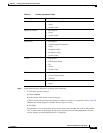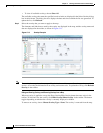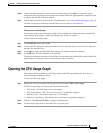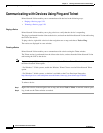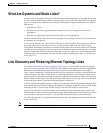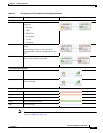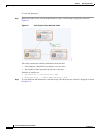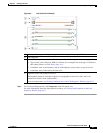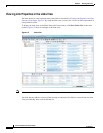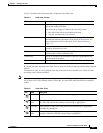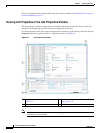
6-3
Cisco Prime Network 4.0 User Guide
OL-29343-01
Chapter 6 Working with Links
What Are Dynamic and Static Links?
What Are Dynamic and Static Links?
Dynamic links are the physical and logical links that exist between elements in the network. These links
are discovered by Prime Network using various protocols (such as STP, CDP, and LLDP). The ongoing
process of autodiscovery maintains this topological information. Property information is provided for
links that are:
• Between two devices.
• Between a device and an aggregation that connects this device to another device inside the
aggregation.
• Between two aggregations that contain devices that cross the aggregations.
If a link is unidirectional, Prime Network Vision displays an arrowhead on the link. If it is bidirectional,
an arrowhead is not displayed.
Static links are links that are created at the VNE level but are not updated. These links do not perform
any configuration or provisioning on a device or in the network. Static links are useful for map
visualization and network correlation; for example, if Prime Network Vision does not discover a link that
you know exists in the network, you can create a static link that is displayed in the map. For correlation
purposes, Prime Network Vision treats the static link as if it were a physical or logical link and allows
correlation flows to go through the static link. For information on creating static links, see Adding Static
Links, page 6-15.
Link Discovery and Flickering Ethernet Topology Links
As mentioned in What Are Dynamic and Static Links?, page 6-3, Prime Network discovers topology
links using various protocols, such as STP, CDP, and LLDP. In some situations, the link configurations
themselves can prevent Prime Network from discovering the correct information. For example, if
Layer 2 protocol tunneling is configured and the discovery protocols are tunneled, Prime Network can
create an incorrect link. This scenario results in a flickering link that is first created incorrectly due to
tunneled discovery information, and then disconnected when the Prime Network counters test discovers
that the counters on the edges of the link do not match. During the next topology cycle, Prime Network
recreates the link, which is disconnected again during the counters test.
A link is considered flickering when it is connected, disconnected, and reconnected when using the same
connection technique because the topology information is conflicting. When this situation occurs, Prime
Network generates a system event with the message “Physical Link discovery inconsistent.”
To prevent an ongoing cycle of link creation and disconnecting, Prime Network detects such case of
flickering links, creates a system event with the message “Inconsistent Physical Link Discovery between
system:interface1 and system:interface2,” and stops the link from flickering by disconnecting it.
To remedy the situation, we recommend that you wait until the link disappears from the map and then
create a static link.
Note This feature applies only to Ethernet links.



